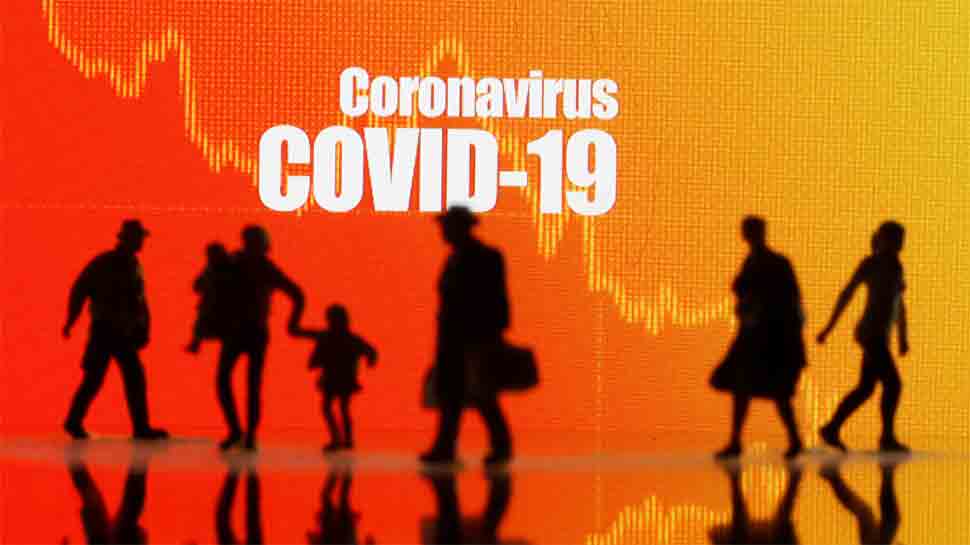New Delhi: The unprecedented outbreak of coronavirus (COVID-19) that was first reported on December 31, 2019, by the Wuhan Municipal Health Commission, China, as "a cluster of cases of pneumonia" in Wuhan, Hubei Province, has now crossed the 50 lakh mark of confirmed infections globally on Wednesday (May 20, 2020).
There are tens of thousands of people across the world who are reportedly contracting the coronavirus every day and the daily surge indicates that having control over the infection may take time and in order to curb it, every individual will need to adhere strictly to the coronavirus safety measures.
It is caused by the SARS-CoV-2 virus which spreads mainly when an infected person comes in close contact with another person and as per the World Health Organisation (WHO), it spreads primarily through droplets of saliva or discharge from the nose when an infected person coughs or sneezes.
Now, here is a look at the history of coronavirus spread around the world and how the cases increased over the past six months.
The WHO on its official Twitter account on January 4, 2020, wrote, "China has reported to WHO a cluster of pneumonia cases — with no deaths — in Wuhan, Hubei Province Flag of China. Investigations are underway to identify the cause of this illness."
#China has reported to WHO a cluster of #pneumonia cases —with no deaths— in Wuhan, Hubei Province. Investigations are underway to identify the cause of this illness.
— World Health Organization (WHO) (@WHO) January 4, 2020
By January 12, there were around 41 cases of "pneumonia of unknown cause" in Wuhan City. The WHO's official statement on January 12 read, "The evidence is highly suggestive that the outbreak is associated with exposures in one seafood market in Wuhan."
It also stated that the market was closed on January 1, 2020, and at that stage, "there was no infection among healthcare workers, and no clear evidence of human to human transmission."
Among those 41 confirmed cases, there was one death. According to the preliminary epidemiological investigation, most cases worked at or were handlers and frequent visitors to the "Huanan Seafood Wholesale Market."
The virus was first recorded outside of China on January 13, 2020, when the officials confirmed a case in Thailand.
WHO experts after conducting a brief field visit to Wuhan on January 20-21, released an official statement saying that the data collected through detailed epidemiological investigation and through the deployment of the new test kit nationally "suggests that human-to-human transmission is taking place in Wuhan."
The virus that has shaken the foundations of the world, was then declared a Public Health Emergency of International Concern (PHEIC) on January 30. Notably, this was the sixth time WHO had declared a PHEIC since the International Health Regulations (IHR) came into force in 2005.
The WHO's situation report on January 30 reported 7,818 total confirmed cases worldwide, with the majority of these in China, while 82 cases were recorded in 18 other countries. WHO also gave a risk assessment of 'very high' for China, and 'high' at the global level.
After several meetings, joint missions, researches, and innovation forums, WHO on March 11 made the assessment that COVID-19 can be characterized as a 'pandemic.' There were already more than 1,26,215 confirmed COVID-19 cases in the world by that time.
Subsequently, the total number of COVID-19 cases across the world had touched 10 lakh by April 2, with over 55,500 deaths, according to the Worldometers website's COVID-19 data.
By April 15, the coronavirus infections surged to 20 lakh while the death count had mounted to 1,40,791.
In the next 13 days, there were more than 30.55 lakh coronavirus positive infections in the world and it crossed 40 lakh on May 8.
The worst-hit country has been the United States (US) with around 15.77 lakh confirmed infections, which is approximately 31.5% of the world cases. The US also has the highest number of COVID-19 deaths as close to 94,000 people have succumbed to the virus.
Earlier on May 19, continuing his attack on WHO, the US President Donald Trump alleged WHO of 'failing to publicly call on China to allow for an independent investigation into the origins of the virus." Trump also threatened to permanently stop the US funding to the global health body unless it commits to 'substantive improvements' within the next 30 days.
The US President in a scathing letter sent to WHO Director-General Tedros Adhanom Ghebreyesus wrote, "It is clear the repeated missteps by you and your organization in responding to the pandemic have been extremely costly for the world. The only way forward for the World Health Organization is if it can actually demonstrate independence from China."
Trump who is known for his outspoken remarks, concluded with, "We do not have time to waste. That is why it is my duty, as President of the United States, to inform you that, if the World Health Organization does not commit to major substantive improvements within the next 30 days, I will make my temporary freeze of United States funding to the World Health Organization permanent and reconsider our membership in the organization."
This is the letter sent to Dr. Tedros of the World Health Organization. It is self-explanatory! pic.twitter.com/pF2kzPUpDv
— Donald J. Trump (@realDonaldTrump) May 19, 2020
Besides the US, Russia with 3,08,705 infections, Spain with over 2,78,800 confirmed cases, Brazil with 2,75,380 positive cases and the UK with around 2,48,810 coronavirus patients have also been severely hit by COVID-19.
Countries around the world have put in place a range of public health measures to suppress the spread of the virus that has brought over 7 billion lives to a standstill.
















